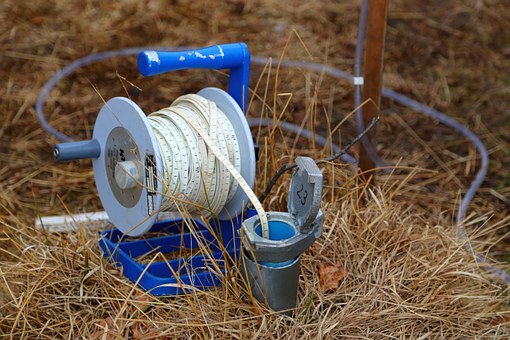By Victor Rivera-Diaz
With construction beginning in April of 2020, the replacement of the northbound Howard Frankland Bridge on Old Tampa Bay is an ongoing endeavor. It is an $814 million infrastructural bid to renovate a critical thoroughfare that connects the Pinellas and Hillsborough counties by way of St. Petersburg and Tampa, respectively. For regular commuters who cross this bridge, traffic congestion spanning several hours is a known and often cumbersome occurrence on the Interstate 275 Causeway. Moreover, it is a considerable choke point in the region’s evacuation route network.
The project underway will add an additional bridge, which will carry four southbound lanes along with four express lanes (two lanes in each direction), as well as a protected pedestrian/cyclist lane. A transit rail is proposed for the future. The southbound traffic currently carried by the 1990 Bridge will be converted into northbound traffic; the original 1960 Bridge is slated for demolition. Crucially, the potential and expected environmental impacts of this project have been assessed by the Florida Department of Transportation and partner organizations and agencies in order to avoid or minimize the effects on neighboring seagrass communities and Tampa Bay water quality.
History of the Howard Frankland Bridge
Construction for the original span of the Howard Frankland Bridge began in 1956, and was first opened for operation on January 15, 1960. Named after Howard Frankland, the businessman who proposed it, the bridge comprised four lanes with two lanes running in each direction. The total cost of its initial construction was $16 million. Over the years, the original design, referred to here as the 1960 Bridge, was considered to be below constructions standards. It also proved to be dangerous due to the lack of emergency shoulders.
Twenty years later, in the 1980s, the escalation of traffic conditions in the region had caused the original 1960 Bridge to quickly deteriorate. This led to calls to build a four-lane bridge running parallel to the original. The construction of the additional span, or the 1990 Bridge, began in 1988 and received its first flow of traffic in 1991. Around the same time, the 1960 Bridge was briefly closed and then rehabilitated in 1992, exclusively carrying northbound traffic. Over the 60 years since it was first inaugurated, the Florida Department of Transportation has underscored the rising costs of maintenance for the 1960 Bridge. Among the associated costs, continual repairs to the cathodic protection system and the restoration of the spalled concrete areas have prompted concerns about its capacity to withstand present-day traffic pressures.
In addition, the findings of an inspection conducted in 2010 revealed that a sufficiency rating of 61.8 for the 1960 Bridge rendered it “structurally deficient.” Necessary repairs were made in 2013 to bring the sufficiency rating up to 80.0; however, the department recognizes that the original design was meant for a 50-year life span. In terms of an 80-year analysis period, the results of a life-cycle cost analysis conducted by the department in 2011 found that replacing the 1960 bridge would be considerably less expensive than continuing to repair it by over 25 percent.
As it stands, the Howard Bay Bridge carries an average of 139,000 vehicles daily along Interstate 275. This makes it the foremost bridge of three bridges between Pinellas and Hillsborough Counties; the other two are the Gandy Bridge and the Courtney Campbell
Causeway. It also serves as the main route of evacuation for Pinellas County, and is part of the Florida Division of Emergency Management’s evacuation route network.
Measures to Reduce or Minimize Environmental Impacts
In order to meet the potential environmental challenges of the bridge expansion, the Florida Department of Transportation is conducting a Project Development and Environment (PD&E)
Study. Among the many factors that this study evaluates are the potential “social, cultural, economic and environmental effects” that may arise from improvement projects to existing transportation structures. Moreover, the study is meant to position the expansion project in alignment with the requirements set forth by the National Environmental Policy Act.
With regard to local ecosystems, the department is implementing efforts to avoid or otherwise minimize environmental impacts to the seagrass communities and surrounding waters of Tampa Bay. Consequently, the new bridge is being built to the west of the 1990 Bridge in order to avoid disturbing critical seagrass communities found to the east of the 1960 Bridge. In addition, several revisions to the designs for both northern (Hillsborough) and southern (Pinellas) abutments were made to minimize impact footprints that were determined to be unavoidable.
To prevent water pollution associated with the construction stage, discharge prevention measures such as silt screens and floating turbidity barriers are being used to reduce potential impacts to Tampa Bay waters. At the same time, the department recognizes that the southern end of the bridge is located above waters designated as Outstanding Florida Waters (OFW) as well as an Aquatic Preserve. This designation, in turn, requires that construction operations abide by water quality standards pursuant to Rule 62-4.242 F.A.C. For this reason, the department is requesting a temporary mixing zone in the event of degraded water quality during construction in accordance with the aforementioned rule.
Another water quality measure includes the proposed turbidity monitoring plan, which ensures that turbidity levels in controlled areas return to 0 Nephelometric Turbidity Units (NTUs) on the southern end (Pinellas) and 29 NTUs on the northern end (Hillsborough). The department’s Construction Engineering and Inspection (CEI) firm will be the primary team monitoring turbidity levels.
Below is the Howard Bridge Expansion Project in numbers:
– Total project length = 6.4 miles
– 3006 piles = 40 miles
– 1727 beams = 46 miles
– 172,000+ CY Concrete
– 36,674,636+ LB Rebar
– Beam placement is slated for late spring of 2022; deck construction begins in early summer of 2022.
– +250 workers onsite during the peak construction period
Among the many challenges posed by the project, the Florida Department of Transportation’s Resident Engineer Greg Deese points out that the first stage of the project is the most difficult.
This involves drilling through a hard rock layer beneath the bay, followed by concrete and steel piles which are then driven into the ground. “Once the pile-driving is done, it should be a really good job to finish up,” Deese explains.
With roughly 100,000 people expected to relocate to the Tampa Bay Area over the next 50 years, this expansion project will not only serve a growing population but also ease traffic congestion and improve the growing evacuation network needs.



